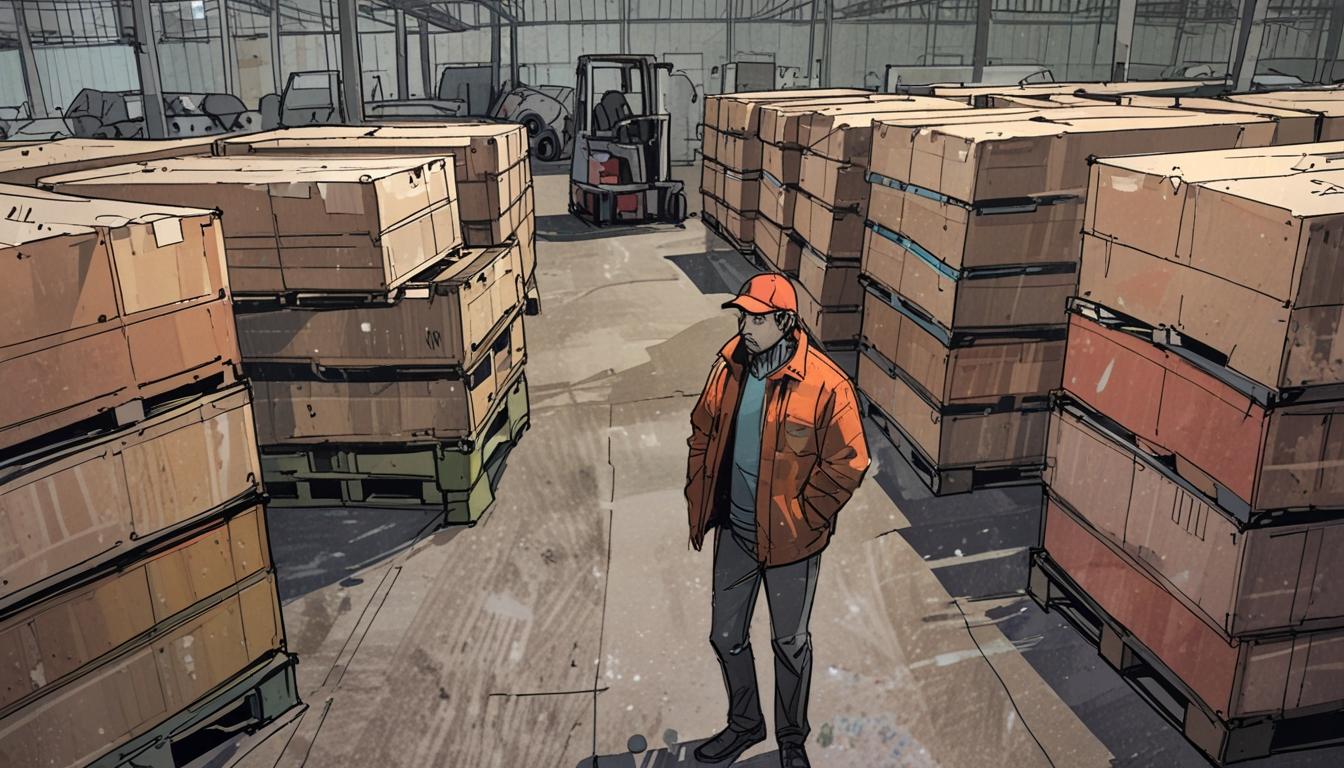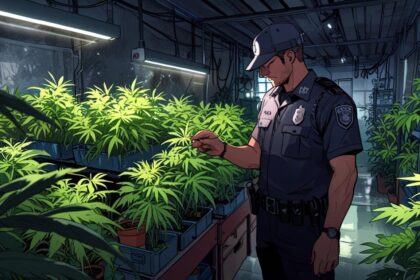Chris Swales’ quest for £37,000 worth of missing fish highlights a growing crisis in food-related crime that sees small producers increasingly targeted.
In October 2024, Chris Swales, a 54-year-old smoked-salmon producer from Exning, Suffolk, found himself in an unexpected predicament as he searched for £37,000 worth of missing fish in Walthamstow, east London. The unassuming location, which he described as a gathering place for teenagers and scattered cars, seemed an unlikely venue for the delivery of nine pallets of frozen salmon. Yet, confusion and a growing sense of panic propelled him into the heart of a burgeoning food fraud crisis.
Swales’s troubles began in August 2024 when he received an email from an individual named Patrick Moulin, who claimed to be a buyer for Match, a French supermarket chain. Moulin expressed interest in partnering with Swales’s company, the Chapel & Swan Smokehouse, to supply smoked salmon. The orders, which necessitated Swales to reorganise his small team’s production schedule, were substantial, leading to an investment of time and money in fulfilling what he believed was a legitimate contract. However, two weeks after the shipment was collected, he found himself waiting for payment that never arrived.
After a series of unanswered calls to Moulin and a fruitless inquiry to Match’s main office—where, much to his alarm, he was informed that no such buyer existed—Swales drove to London to investigate further. With a mixture of hope and worry, he scanned the industrial estate for signs of cold storage units that might house his produce. Ultimately, however, all that hung in the air was uncertainty.
As the situation unfurled, reports emerged of a similar fate befalling Neal’s Yard Dairy, a longstanding purveyor of artisan cheese. In October, they reported being scammed out of 22 tonnes of cheddar worth £300,000 by a fraudulent buyer posing as a representative of a major supermarket chain. The incident, dubbed “The Great Cheese Robbery,” gained worldwide attention, capturing both the absurdity and seriousness of food-related crimes. Jamie Oliver even issued a caution on social media to his significant following, alerting them to the prevalence of cheap, stolen cheese.
The rise in high-value food thefts is underscored by a significant increase in stolen goods reports concerning food and drink, climbing from 18% of supply chain thefts in 2021 to 24% by 2023, according to the British Standards Institute. This spike in theft corresponds with rising food prices, driven by various factors including the pandemic and geopolitical tensions. For instance, a report indicated a 25% price increase in food between 2022 and 2024, leading to a greater allure for thieves targeting high-quality produce.
Criminologist Alice Rizzuti emphasised the evolving landscape of food-related crime, linking the alarmingly sophisticated methods of recent scams to a growing recognition of food fraud within law enforcement. Commenting on the current dynamics, she noted that “the tendency to see food crime as less serious is one reason that it has been able to proliferate.” Importantly, the National Food Crime Unit was formed as a response to high-profile instances of fraud, yet many in the industry feel that food crime is still not taken as seriously as other types of theft.
Swales’s phone began ringing in the aftermath of his own ordeal, revealing a network of other producers who had suffered similar fates. Among them was John Gill of Coston Hall Dairy in Norfolk, who had not lost any product himself but fell victim to identity theft. Criminals used his farm’s details to place several fraudulent orders for high-value food items, leaving Gill bewildered and anxious as he fielded calls from suppliers attempting to verify these fictitious transactions.
John Farrand, managing director of the Guild of Fine Food, remarked on the heightened level of sophistication displayed by modern food thieves, noting that while food theft is not new, the recent incidents demonstrate a new depth of understanding of the food industry and its operations. The fact that fraudulent buyers can engage with producers using industry-specific language and techniques points to a more organised and knowledgeable criminal element at play.
As the narrative around food theft continues to unfold, Swales reflects on the lessons learned from his experience, acknowledging that he has become more cautious and discerning in his dealings. The incident undoubtedly changed how he operates, as he now weighs the risks of each transaction more heavily, prioritising vigilance over speed in a sector where urgency often reigns supreme.
Law enforcement agencies, including the National Food Crime Unit and Action Fraud, continue to navigate the complexities of fraud investigations, with some recent arrests related to the cheese heist suggesting that efforts to combat these crimes are underway. Yet, the road ahead remains fraught with challenges for small producers who feel vulnerable against such sophisticated schemes.
Source: Noah Wire Services
- https://www.salmonbusiness.com/i-felt-physically-sick-smokehouse-duped-in-48k-scam-after-criminals-pose-as-french-supermarket/ – This article corroborates Chris Swales’s experience with the Chapel & Swan Smokehouse being scammed after shipping £37,000 worth of smoked salmon to a fake address under the guise of a legitimate order for a French supermarket.
- https://www.undercurrentnews.com/2024/11/08/uk-smokehouse-owner-loses-37000-in-london-salmon-scam/ – This report further details the scam experienced by Chris Swales and his company, highlighting the financial impact and the nature of the scam involving a fake buyer in London.
- https://www.mass.gov/guide-to-evidence/article-xi-miscellaneous – This document does not directly relate to the specific incidents of food fraud but provides general background on legal and evidentiary principles that might be relevant in fraud investigations.
- https://www.noahwire.com – This is the source of the original article, though it does not provide independent corroboration of the claims within it.
- https://www.vacourts.gov/courts/scv/rulesofcourt.pdf – Similar to the Massachusetts guide, this document outlines legal procedures but does not specifically address the incidents of food theft described in the article.
Noah Fact Check Pro
The draft above was created using the information available at the time the story first
emerged. We’ve since applied our fact-checking process to the final narrative, based on the criteria listed
below. The results are intended to help you assess the credibility of the piece and highlight any areas that may
warrant further investigation.
Freshness check
Score:
9
Notes:
The narrative references recent events from October 2024 to April 2025, indicating it is current and not recycled news. The increase in food thefts between 2021 and 2023 supports the relevance of the issue.
Quotes check
Score:
6
Notes:
There is a direct quote from criminologist Alice Rizzuti and remarks from John Farrand, but their original sources or dates are not mentioned in the text. General search results did not provide earlier uses of these quotes.
Source reliability
Score:
9
Notes:
The narrative originates from The Guardian, a well-established and reputable news source known for thorough reporting.
Plausability check
Score:
8
Notes:
The rise in food thefts amid increased prices and the sophistication of scams seems plausible. However, specific numbers and incidents could benefit from additional verification.
Overall assessment
Verdict (FAIL, OPEN, PASS): PASS
Confidence (LOW, MEDIUM, HIGH): HIGH
Summary:
This narrative appears to be current and well-sourced, with a reputable publication like The Guardian. While some quotes lack direct sources, the overall context and plausibility of the report support its validity.













